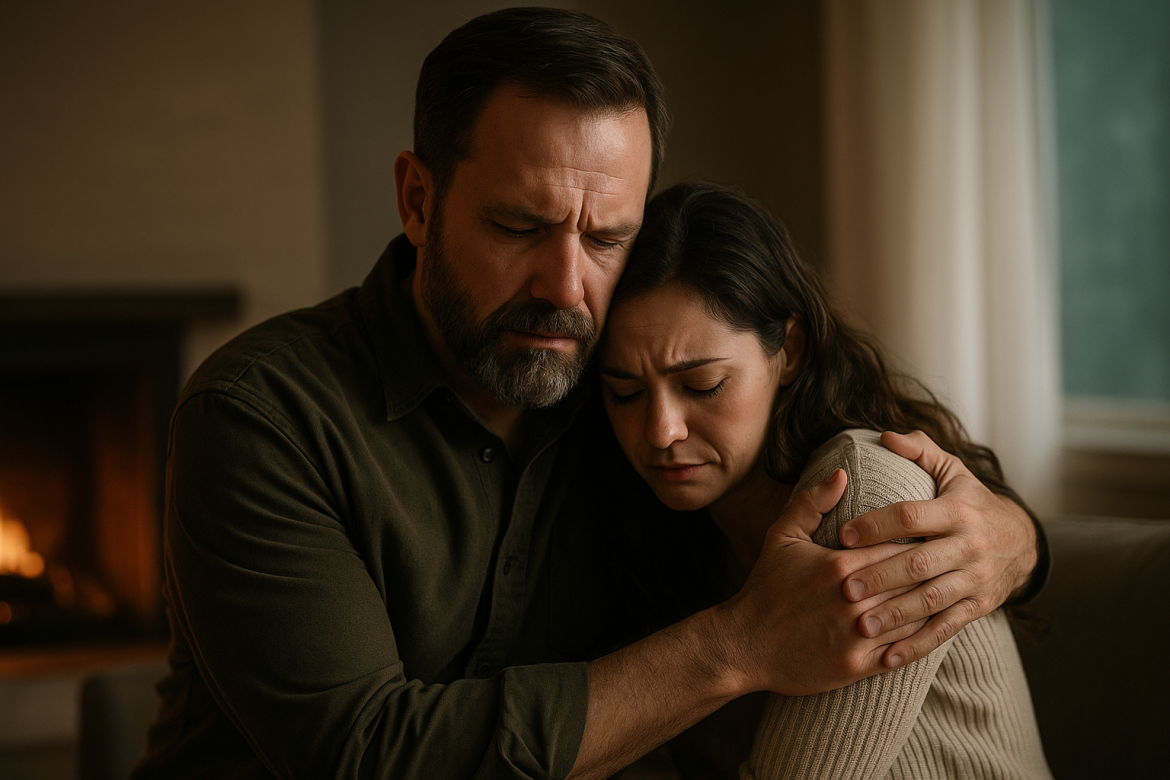Five Things We Will Learn
- Why young people need truth-tellers and faith after painful mistakes and loss.
- How shame isolates both men and women in the aftermath of pregnancy and miscarriage.
- Why youth and veteran suicide is escalating—and the destructive lies at its core.
- How vulnerability and meaningful human connection interrupt cycles of despair.
- Why hope in Christ is the cornerstone that makes a future possible.
Leaning on Others and on Faith
David Rutherford shares advice for someone young who has gotten someone pregnant and then experienced a miscarriage. His first counsel: lean on people you can count on—those who will speak truth into your life. Faith, too, can be a source of strength.
He recalls his own story: when he went through something similar, he didn’t have anyone to turn to. He felt ashamed, lost, and didn’t know how to heal.
Rutherford observes that young people often get caught up in the passion and intimacy of the moment, not thinking through the consequences. Unintended pregnancies happen, and while abortion numbers are staggering, he also knows people who chose to press forward. Some married, had children, and built lives together. He’s seen this even in his own family.
His advice: don’t be afraid to ask for help. The weight of thinking you’ve done something wrong or that you aren’t good enough can crush both the woman and the man. There’s a myth that young men can’t process emotions—that they lack emotional intelligence or are too afraid to try. Rutherford calls that out. He says you must face the fear and pain head-on, be willing to learn from it deeply, and pair that learning with faith. That foundation is what brings real healing—the very thing he wishes he’d had.
The Rising Suicide Crisis
Sean Ryan then raises the issue of suicide, something he and Rutherford have both faced personally with mutual friends lost to it. He points out that it’s not only veterans—today’s youth are also under immense pressure: predators, blackmail, social media, self-esteem issues, and the desperate struggle to belong.
Teen suicide rates are at an all-time high. After COVID, the suicide rate among teenage girls rose by 50%. Ryan notes that Rutherford’s wife, Janna, even lived through the pain of her ex-husband’s suicide. So he asks: For teenagers on the edge, what advice would you give?
Related:
- Returning to First Principles: Restoring Family, Church, and Spiritual Power
- Is It Time to Rethink Church?
- Explosive Church Growth in Cuba; Following Simple Biblical Truth
- Prophesy- Revival Coming to Cuba
- Suffering in Cuba Has Produced Massive Church Growth with no signs of Slowing Down
- Family: God’s Original Intent for the Church – It’s like the Church of Acts: dreams, visions, miracles, healings
- House Church or CHURCH that meets in the House: A Big Difference!
- Back to Basics for the Church
“You Are Loved”
Rutherford’s first answer is simple and profound: know you are loved.
But in those dark moments, it’s not that teens don’t believe they are loved—it’s that they feel they can’t return that love. They believe their absence would make life easier for others. They think, “I’m the problem. If I were gone, my family or friends would be better off.” Or they feel exhausted, overwhelmed, and without options.
These insecurities are worsened by desocialization. Rutherford recalls that in 2006, 13-year-old boys spent four to six hours a day on screens, girls maybe five to eight. Today, kids are online 13–14 hours daily—glued to phones or streaming. This immersion leaves little room for face-to-face conversations, for safe spaces where emotions can be processed with someone trustworthy.
What kids need, he says, isn’t someone who pretends to fix everything. They need someone who can sit across from them and say: “I can’t make this go away, but we can work together to find your foundation.”
The Cornerstone of Christ
For Rutherford, that foundation is the cornerstone of Christ. Knowing that Jesus died for our sins gives us the courage to confront self-loathing and the lie that we are not good enough.
Trauma is real, whether it’s generational pain, dysfunctional families, or personal mistakes. But trauma is not limited to those in poverty. He has seen families with very little money who love each other deeply, forming bonds that act as a net to catch one another in freefall.
That’s what we all need—people who will have our backs.
Breaking the Wheel of Despair
Rutherford describes how despair begins when young people spiral into self-talk like: “I’m ugly,” “I’ll never be popular,” “I don’t fit in,” “I’m different.” That self-perception can become an infinite wheel of despair, difficult to slow down or escape.
The answer? Human interaction. It’s always been that way, since the earliest human tribes gathered around fires to tell stories. When someone shares their struggles, it resonates. This is why millions connect with stories of vulnerability from people they admire.
Rutherford insists we need more dialogue, sincerity, and empathy. Vulnerability is not weakness—it’s courage. It takes strength to sit with someone and ask, “What’s really going on? I can’t promise to solve this in an hour, but I’m here.”
Isolation in our own thoughts blinds us to others’ pain and makes us dismissive. But a simple, “Hey, you good?” can break that silence.
Related:
The Loss of a Friend
Rutherford shares the story of his friend Dave Hall. He remembers the call from his friend Chris: “Dave’s struggling.”
When Rutherford called, Dave told him he was fine. He had just gotten out of rehab, said he was heading to Alaska. Rutherford offered to fly him to Florida or raise money to get him into a program in Houston. Dave agreed to spend a week at home in North Florida and then call.
Days later, Rutherford heard the news: Dave had taken his own life.
He still asks himself: Why didn’t I drive up? Why didn’t I go?
Talking Openly About Suicide
For Rutherford, losing Dave drove home the truth that suicide must be talked about openly. It’s not a topic to avoid. The human soul is fragile, and when self-loathing overwhelms it, ending life can look like escape.
He would tell kids: lean into someone who loves you. Don’t hide. Find someone wise, sit down, and talk. He and John are now developing a course at the Frog Logic Institute to address suicide head-on.
Life Comes in Phases
Sean Ryan shares some encouragement: life has phases, and every phase ends.
Maybe your childhood was hard. Maybe you had bad parents, bad siblings, bad friends, or made bad decisions. But life turns. The wheel keeps moving. Better days are ahead if you are willing to change.
Hope is real.




